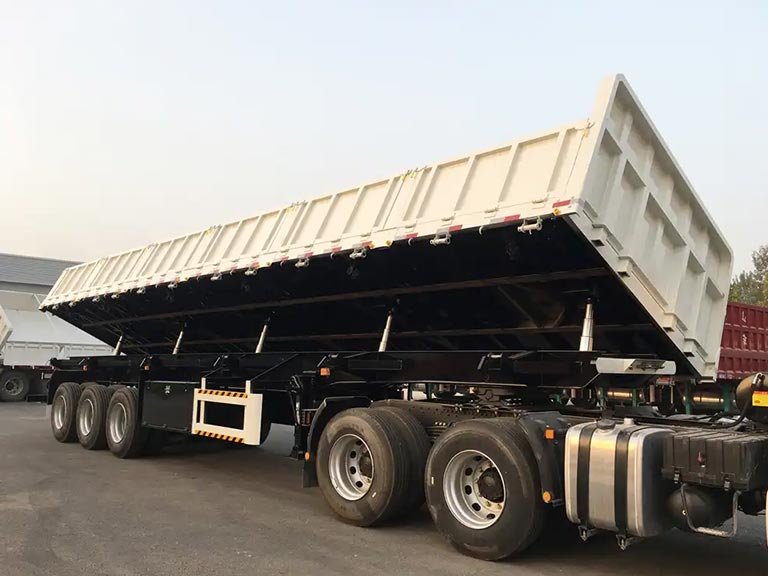A side tipper trailer, also known as a side tipper dump truck. It is a specialized vehicle for efficient cargo transport. It differs from traditional rear dump trucks by unloading cargo from the side. This is done using a hydraulic system to elevate one side of the trailer body.
Side tippers offer significant advantages in confined spaces. They are increasingly popular in construction, mining, agriculture, and waste management. This is due to their operational efficiency and versatility.
At Genron International Trade, we specialize in manufacturing semi-trailers. These include tanker, lowbed, flatbed, and rear dump trailers. In addition, we can provide customized services according to customer needs.
Table of Contents
Understanding Side Tipper Trailers
Side tipper trailers provide a practical solution for industries needing to unload materials in confined spaces. These trailers are equipped with a hydraulic system. This system enables the unloading of goods by tipping the trailer body to one side.
Definition and Basic Components
A side tipper trailer is a type of trailer that uses a hydraulic system to unload materials by tilting the trailer body sideways. It includes a robust trailer body, a hydraulic system, and a heavy-duty chassis. The trailer body is designed to withstand heavy-duty use. The hydraulic system provides the power needed to tip the body.
The key components work together to facilitate efficient unloading. The hydraulic system, powered by the truck’s power take-off (PTO) unit, drives the tipping mechanism. This setup allows for controlled unloading, making it suitable for various applications.
| Component | Description | Function |
| Trailer Body | Robust body designed for heavy-duty use | Holds the material to be transported |
| Hydraulic System | System powered by the truck’s PTO unit | Provides the power to tip the trailer body |
| Chassis | Heavy-duty chassis | Supports the trailer body and hydraulic system |
Begin with a bespoke semi-trailer designed for your exact needs. Whether it’s heavy-duty hauling or specialized cargo, we’ve got the perfect solution to keep you moving forward.
How Side Tipping Works
The side tipping process involves several key steps. First, the trailer is positioned at the unloading site, ensuring sufficient clearance and stable ground conditions. Once in place, the hydraulic system is engaged, lifting one side of the trailer body while the other side remains hinged to the chassis.
- The hydraulic system is engaged, lifting one side of the trailer.
- As the angle increases, gravity pulls the load toward the lowered side.
- The tipping angle is precisely controlled, allowing for partial or complete discharge.
- Safety mechanisms prevent over-tipping and ensure stability throughout the process.
This process allows for efficient unloading, even in confined spaces. Side tipper trailers are an ideal solution for various industries. The entire operation can be completed in under two minutes, significantly enhancing operational efficiency.
Types of Side Tipper Trailers
The versatility of side tipper trailers is reflected in their diverse types, each designed for specific applications. Genron International Trade offer a range of side tipper trailers that cater to various hauling needs. From standard configurations to high-capacity interlink systems, we have it all.
Standard Side Tipper Trailer
Our standard side tipper trailers are designed for efficient bulk material transport. These trailers feature a robust construction and a hydraulic tipping mechanism for easy unloading. The standard side tipper trailer is ideal for applications where maneuverability and payload capacity are crucial.
- Robust construction for durability
- Hydraulic tipping mechanism for efficient unloading
- Ideal for various bulk material transport applications
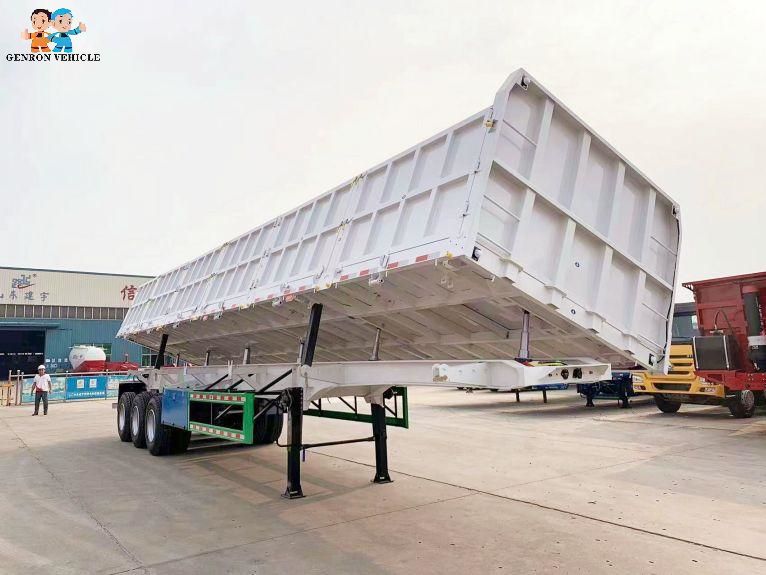
Interlink Side Tipper Trailer
Interlink side tipper trailers are designed for heavy-duty hauling. They consist of two units connected by a single truck tractor. This setup allows for hauling up to 140 tons in a single trip. The interlink design ensures synchronized movement and proper weight distribution, making it efficient for large-scale projects.
- High-capacity payload of up to 140 tons
- Specialized coupling system for synchronized movement
- Ideal for large-scale construction and mining applications
By understanding the different types of side tipper trailers, businesses can select the most appropriate equipment for their specific hauling needs. This enhances efficiency and productivity.
How Side Tipper Trailers Work
Understanding how side tipper trailers work is crucial for maximizing their benefits. Genron International Trade specializes in providing high-quality customized transportation solutions. Our side tipper trailers are designed to deliver efficient unloading in various scenarios.
Hydraulic System Explained
The hydraulic system is the backbone of a side tipper trailer, enabling efficient unloading. This system is engaged through controls in the cab or on the trailer itself. As hydraulic pressure builds, the cylinders extend, lifting one side of the trailer body.
The hydraulic system’s precise control allows for a smooth unloading process. This is particularly beneficial in small working environments or scenarios that require fast and efficient unloading.
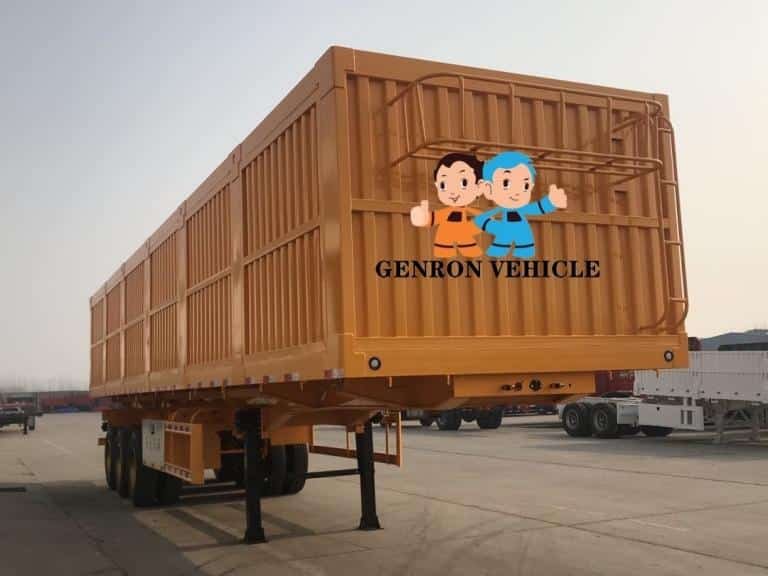
The Process of Unloading
The tipping process begins with the trailer in the proper position. The operator then engages the hydraulic system, and the cylinders extend. This lifts one side of the trailer body while the opposite side remains anchored.
- The initial lifting phase breaks the static friction of the load, beginning the material movement toward the discharge side.
- As the tipping angle increases to 40-45 degrees, the material flows out in a controlled manner.
- The hydraulic system maintains precise control throughout the process, allowing for partial unloading or adjustments to the trailer position.
- Once discharge is complete, the hydraulic system reverses flow, retracting the cylinders and returning the trailer body to its horizontal transport position.
The entire tipping cycle typically requires less than two minutes. This significantly enhances operational efficiency. Our side tipper trailers are designed to provide a reliable and efficient solution for various industries, including construction, mining, and agriculture.
Key Benefits of Side Tipper Trailers
Side tipper trailers offer several key benefits that enhance operational efficiency. They are more flexible in operation and can be used in various work scenes. This is an advantage that traditional dump trucks can’t match.
Increased Unloading Efficiency
Side tipper trailers significantly improve unloading efficiency due to their side discharge design. This allows for easier and faster unloading of materials, especially in confined spaces or areas with limited access. The design of this trailer allows the operator to clearly see the unloading process from the cab. Rear dump systems typically block the view of the unloading point.
Enhanced Stability During Operation
Modern side tipper trailers incorporate advanced stability control systems. These systems continuously monitor the trailer’s position and automatically adjust hydraulic pressure to maintain safe operating parameters. This feature enhances stability during operation, reducing the risk of accidents and improving overall safety.
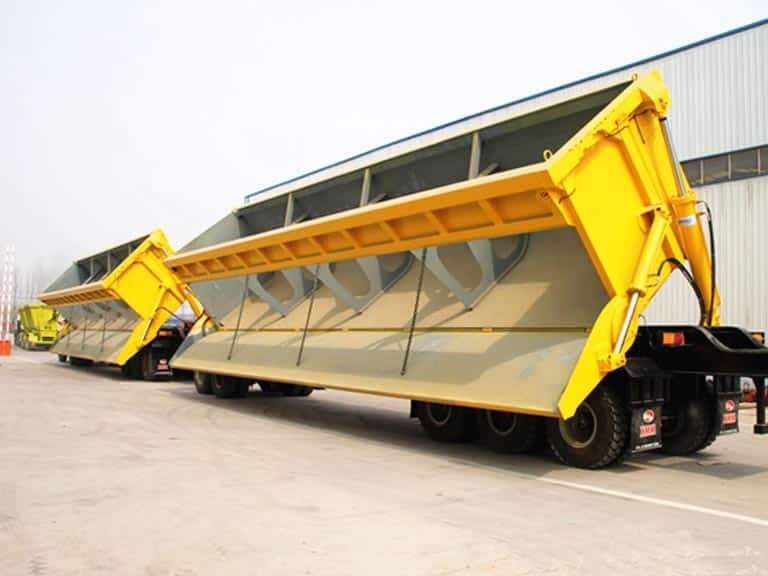
Flexibility in Confined Spaces
The side tipper trailer’s design allows for greater flexibility in confined spaces. Its ability to discharge materials from the side enables it to operate effectively in areas where traditional dump trucks might struggle. This flexibility makes side tipper trailers an ideal choice for various industries, including construction and mining.
Improved Safety Features
Side tipper trailers are equipped with advanced safety systems. These include tip angle limiters, proximity sensors, and hydraulic pressure monitoring systems. These features work together to prevent accidents and ensure safe operation. Some of the key safety benefits include:
- Tip angle limiters that prevent rollover by restricting maximum tilt based on load distribution.
- Proximity sensors that prevent tipping operations if obstacles or personnel are detected in the discharge zone.
- Hydraulic pressure monitoring systems that automatically detect abnormal resistance during the tipping cycle.
- Emergency stop functions are accessible from multiple points, allowing quick shutdown of the hydraulic system if hazardous conditions develop.
By incorporating these advanced safety features, side tipper trailers minimize the risk of accidents and enhance overall operational safety. We prioritize operator safety through an intuitive control layout. This minimizes the possibility of operational errors during dumping.
Side Tipper Trailer Capacity and Specifications
Side tipper trailers come in various configurations. Each has its unique capacity and specifications tailored to different operational demands. The capacity of a side tipper trailer is a critical factor that determines its suitability for various applications, from construction to mining.
3-Axle Side Tipper Capacity
A 3-axle side tipper trailer is designed for heavy-duty applications. They offers a substantial payload capacity. Typically, these trailers can carry between 30 to 40 tons. It depende on the manufacturer and specific configurations. The exact capacity can vary based on factors such as the trailer’s construction, the type of material it’s designed to carry, and the distribution of weight across the axles.
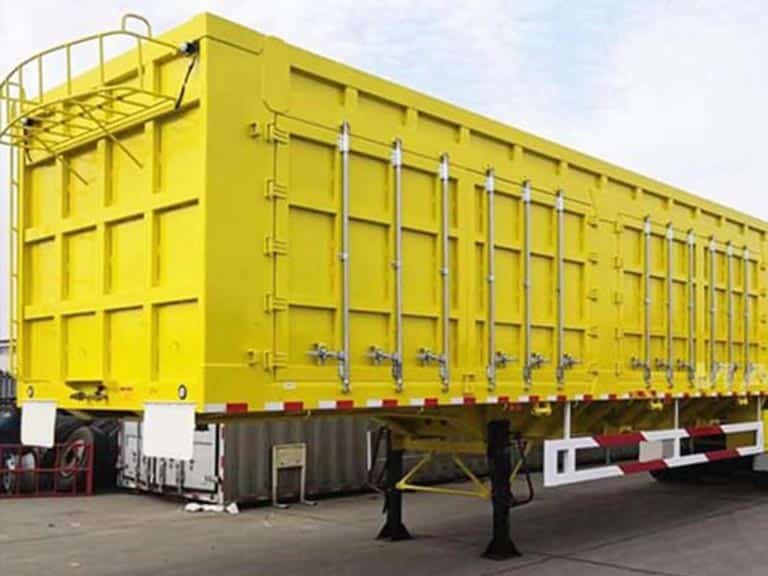
4-Axle Side Tipper Capacity
Four-axle side dump trailers are designed for more demanding tasks. They have a higher payload capacity than three-axle trailers. These trailers can usually handle payloads ranging from 45 to 60 tons. The additional axle provides greater stability and allows for more efficient weight distribution. This makes them ideal for heavy-duty construction and mining operations.
Interlink Side Tipper Capacity
The Interlink side-discharge system represents the pinnacle of bulk material transport efficiency. With special configurations, its total payload capacity can reach 140 tons. The standard interlink arrangement consists of a lead trailer connected to a trailing unit through a specialized coupling system. Each trailer features independent hydraulic tipping mechanisms, allowing for sequential or simultaneous discharge.
This arrangement significantly improves the transport economy. Studies show that, compared to single-trailer operations, costs per ton can be reduced by up to 40%.
| Trailer Configuration | Payload Capacity (tons) | Typical Applications |
| 3-Axle | 30-40 | Heavy-duty construction, aggregate transport |
| 4-Axle | 45-60 | Mining, large-scale construction projects |
| Interlink | Up to 140 | Ultra-heavy mining operations, bulk material transport |
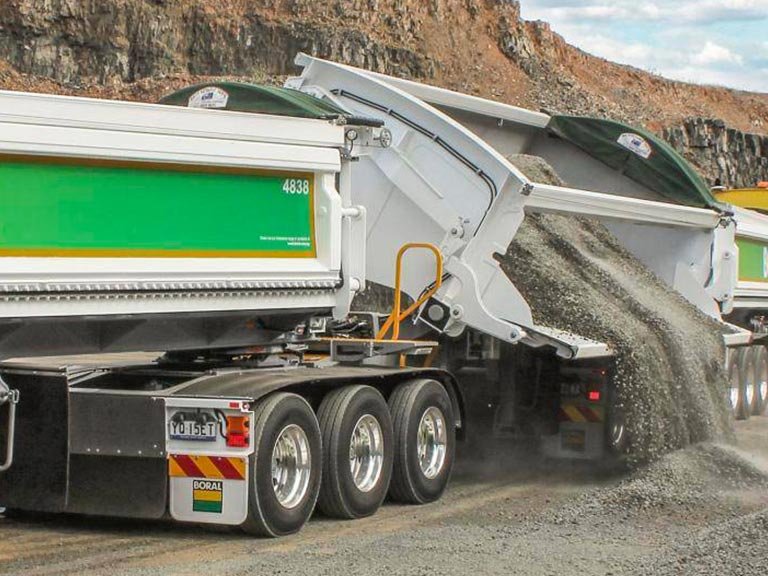
Side Tipper Trailers vs. Traditional Dump Trucks
We should understand the differences between side-dump trailers and traditional dump trucks. This is crucial for companies aiming to optimize logistics and transportation costs. We will examine the key distinctions in their design, functionality, and overall efficiency.
Unloading Mechanism Differences
The primary difference between side tipper trailers and traditional dump trucks lies in their unloading mechanisms. Side tipper trailers unload their contents by tipping to one side, whereas traditional dump trucks tip their load rearward. This fundamental difference affects their operational efficiency and suitability for various tasks.
Side tipper trailers offer a more controlled unloading process, which is particularly beneficial in confined spaces or when precise material placement is required. In contrast, traditional dump trucks are more suited for open areas where rear dumping is not a constraint.
Efficiency Comparison
Side tipper trailers outperform traditional dump trucks in efficiency. Their side tipping mechanism enables quicker unloading and better control over materials. This leads to lower labor costs and higher productivity.
| Feature | Side Tipper Trailers | Traditional Dump Trucks |
| Unloading Mechanism | Side tipping | Rear tipping |
| Unloading Speed | Faster | Slower |
| Operational Flexibility | Higher | Lower |
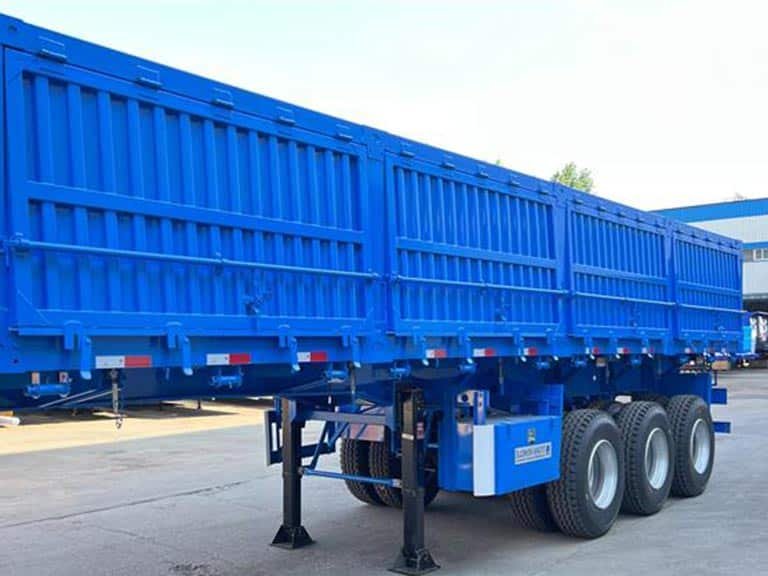
Durability and Maintenance
Side tipper trailers last longer than traditional dump trucks due to the even forces during tipping. The side tipping mechanism reduces stress on the chassis, extending its life by 30-40%. Hydraulic systems also face less pressure, leading to longer seal life and reduced overheating.
The hydraulic system of a side-unloading trailer requires maintenance every 1,000-1,500 hours. The rear dump system requires maintenance every 600-800 hours. The hinge systems spread wear evenly, and body wear patterns are more uniform. This makes maintenance scheduling more effective.
These durability benefits result in substantial lifecycle cost savings. Side dump trailers can last 20-30% longer than rear dump units when properly maintained.
Major Industries Using Side Tipper Trailers
Side tipper trailers have a wide range of uses, and they are vital in various fields such as construction and waste management. They efficiently handle bulk materials, making them crucial in different industries.
- Construction Applications: In construction, these trailers transport and unload materials like sand, gravel, and debris. Their side tipping feature allows for precise placement, reducing waste and enhancing site efficiency.
- Mining Operations: Mining benefits from side tipper trailers due to their heavy-duty load handling. Their robust construction and reliable hydraulic systems are perfect for mining environments.
- Agricultural Uses: Agriculture uses side tipper trailers for transporting grains, fertilizers, and other bulk materials. Their side tipping mechanism makes unloading easy, saving time and labor.
- Waste Management Solutions: Waste management relies on side tipper trailers for handling construction debris, industrial waste, and recycling materials. Their controlled discharge ensures precise waste placement in landfills, optimizing space.
Understanding the diverse uses of side tipper trailers across industries highlights their value. They improve efficiency, reduce costs, and enhance operational capabilities, making them indispensable.
| Industry | Application | Benefits |
| Construction | Transporting bulk materials like sand and gravel | Precise material placement, reduced waste |
| Mining | Handling heavy-duty loads and bulk materials | Robust construction, reliable hydraulic systems |
| Agriculture | Transporting grains and fertilizers | Easy unloading saves time and labor |
| Waste Management | Handling construction debris and industrial waste | Precise waste placement optimizes landfill space |
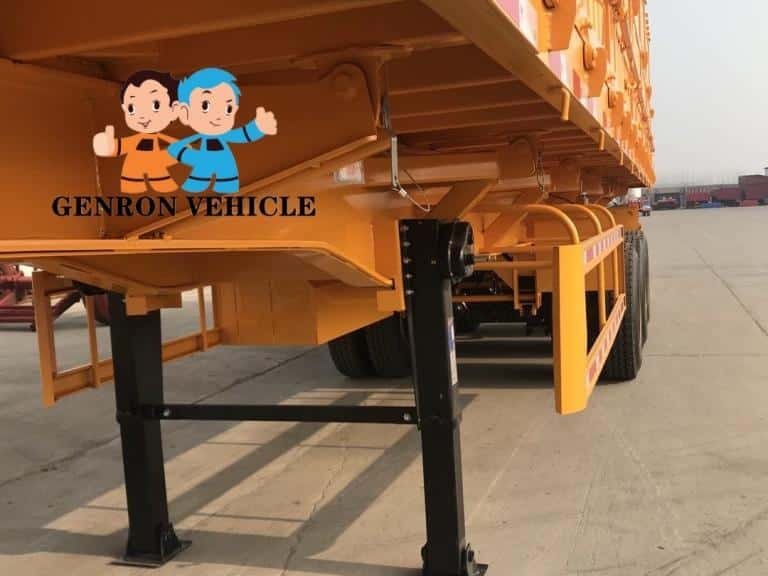
Factors to Consider When Choosing a Side Tipper Trailer
Choosing the right side tipper trailer requires careful consideration of several key factors. These factors directly impact operational efficiency and cost-effectiveness. Assessing various elements is crucial for selecting a trailer that meets your capacity, efficiency, and suitability needs.
Load Capacity Requirements
Load capacity is a primary consideration when selecting a side tipper trailer. Capacities range from 30 to 120 tons, depending on the vehicle’s specifications. It’s essential to assess the typical load you’ll transport to ensure the trailer’s capacity meets your needs. Material density affects capacity, with high-density materials often limiting legal weight limits.
Terrain and Working Conditions
The terrain and working conditions are also critical factors. We consider the type of terrain and environmental conditions, such as weather and temperature fluctuations. This helps determine the necessary trailer specifications, ensuring durability and performance.
Material Type Considerations
The physical properties of materials to be transported greatly affect side tipper trailer specifications. We examine material characteristics to design the right body, hydraulic needs, and structural reinforcement. For example, abrasive materials need wear-resistant bodies, while sticky ones require non-stick liners or vibrators. Corrosive materials demand special coatings or stainless steel to prevent rust.
By carefully evaluating these factors, we ensure the chosen side tipper trailer meets your specific needs. This enhances efficiency, cuts costs, and boosts overall performance.
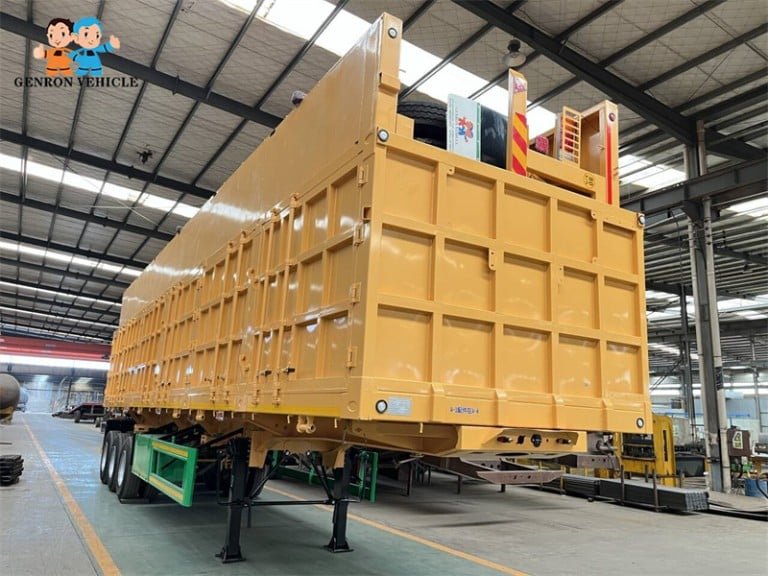
Maintenance and Care for Side Tipper Trailers
Maintaining side tipper trailers is crucial for their longevity and efficiency. For businesses relying on these trailers, regular maintenance is key to minimizing downtime and maximizing productivity. We stress the importance of a detailed maintenance schedule to keep your trailers in top shape.
- Hydraulic System Maintenance: The hydraulic system is essential for a side tipper trailer’s tipping function. Regular maintenance includes checking hydraulic fluid levels, looking for leaks, and ensuring all components are functioning well. We advise scheduling hydraulic system checks as part of your routine maintenance to avoid system failures.
- Structural Integrity Checks: Regular checks on the structural integrity are vital to catch issues early. Inspect frame rails for cracks or deformation, body-to-frame mounting points for stress damage, and hinge assemblies for wear. Also, check suspension, wheel end, and landing gear components regularly to keep the trailer in good condition.
| Component | Inspection Frequency | Key Items to Check |
| Frame Rails | Every 3 months | Cracks, deformation, and cross-member connections |
| Body-to-Frame Mounting Points | Every 6 months | Fastener integrity, bracket deformation, and weld condition |
| Hinge Assemblies | Every 3 months | Pin wear, bushing condition, and mounting integrity |
| Suspension Components | Every 6 months | Air spring condition, shock absorber function, and bushing integrity |
Conclusion
Side tipper trailers have revolutionized material transport, offering unmatched flexibility in unloading. Looking ahead, they will remain crucial in construction, mining, and agriculture. Advancements in side tipper technology are ongoing, enhancing efficiency, durability, and capabilities.
Genron International Trade is dedicated to improving side tipper design through innovation, customer feedback, and field testing. Our goal is to meet the highest performance standards in tough applications.
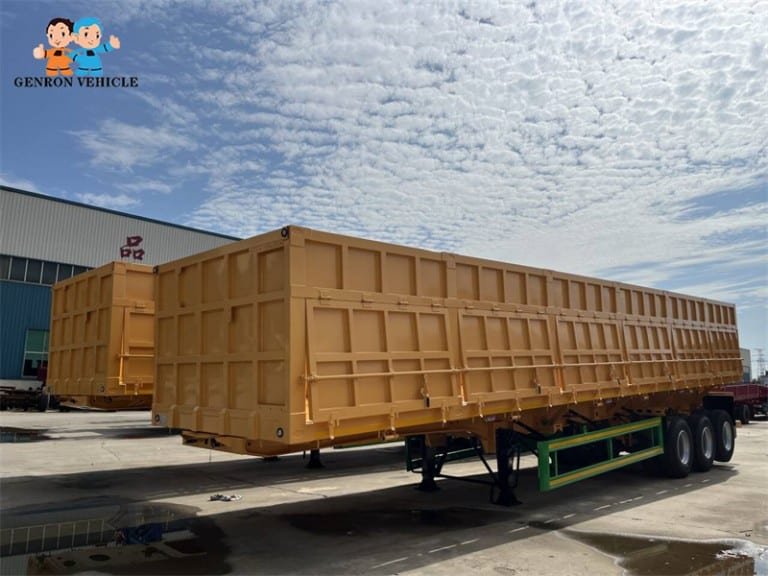
FAQ
What is the carrying capacity of a dump truck?
Dump truck capacity varies by size and type, but generally falls between 10 to 40 tons. Some heavy-duty models can handle even bigger loads.
How does the hydraulic system of a bulk cargo vehicle work?
The hydraulic system in bulk cargo vehicles, like cement or sand trucks, uses fluid pressure. It operates the tipping mechanism for efficient unloading of materials.
What are the benefits of using a tri-axle ton dump truck?
Tri-axle ton dump trucks offer better stability and more carrying capacity. They’re perfect for moving heavy materials over long distances.
How do I choose the right type of dump truck for my business needs?
When picking a dump truck, think about your load capacity needs, terrain, and material type. This ensures you get the right vehicle for your operations.
How often should I perform maintenance on my dump truck’s suspension system?
Regular maintenance is key for your dump truck’s suspension system. Check it every 1,000 to 5,000 miles, based on how much you use it.
Can a rear dump truck be used for transporting heavy materials like sand or cement?
Yes, rear dump trucks can handle heavy materials like sand or cement. However, they might not be as flexible or efficient as side dump or bulker truck trailers.
What is the typical axle configuration for a heavy-duty dump truck?
Heavy-duty dump trucks usually have a tri-axle or quad-axle setup. This gives them better stability and more carrying capacity.

